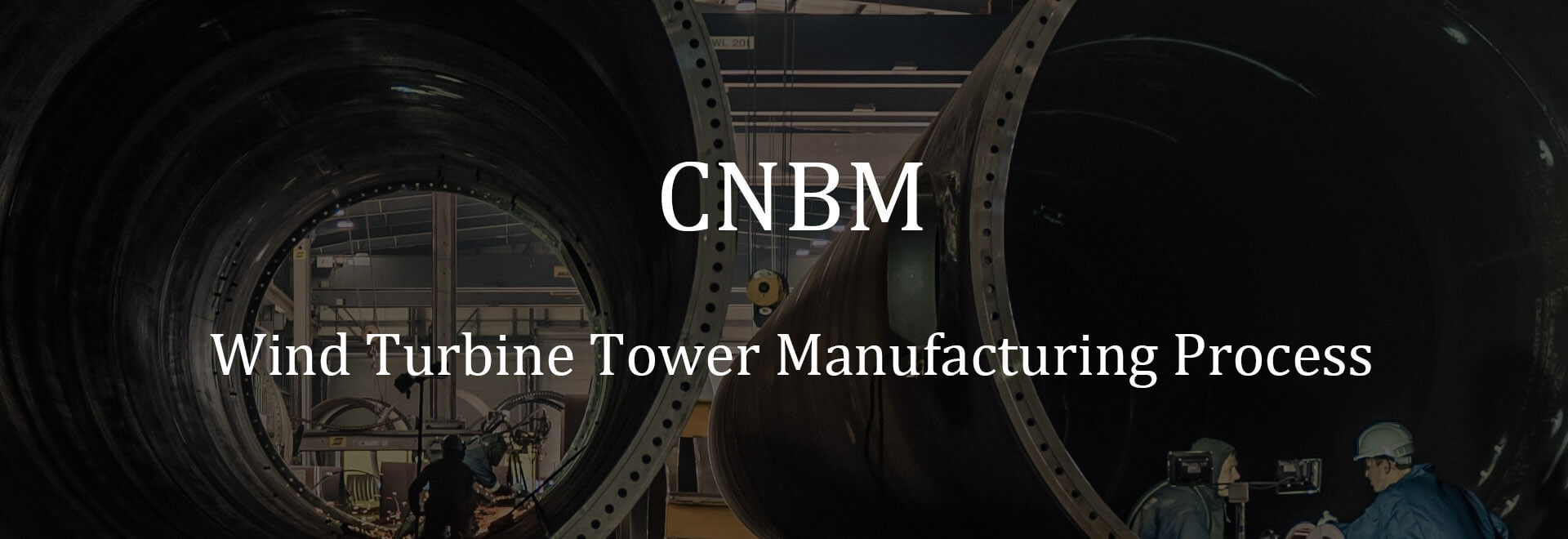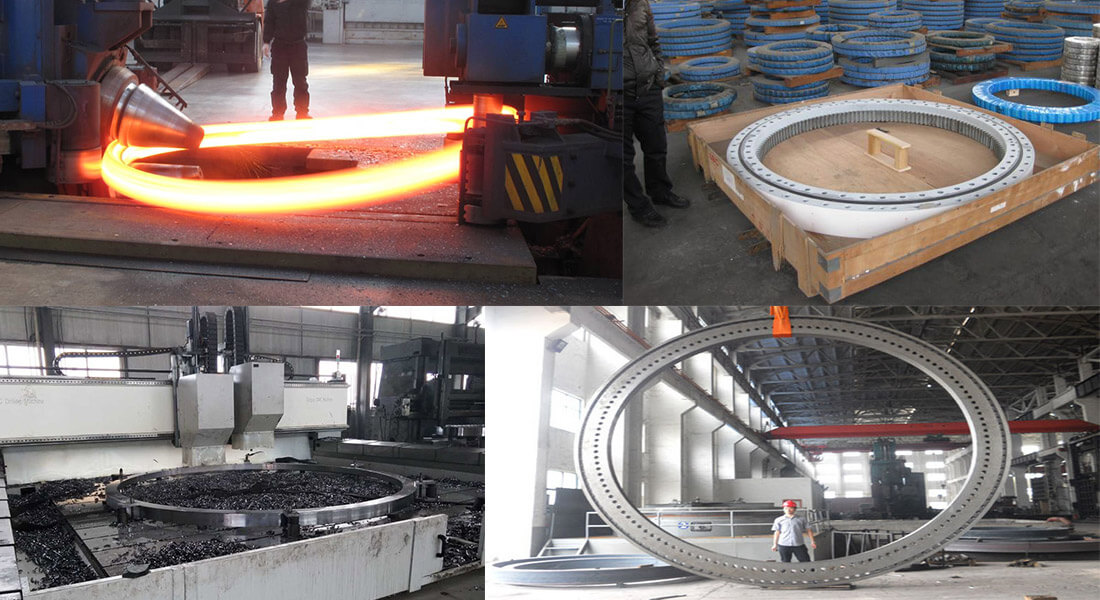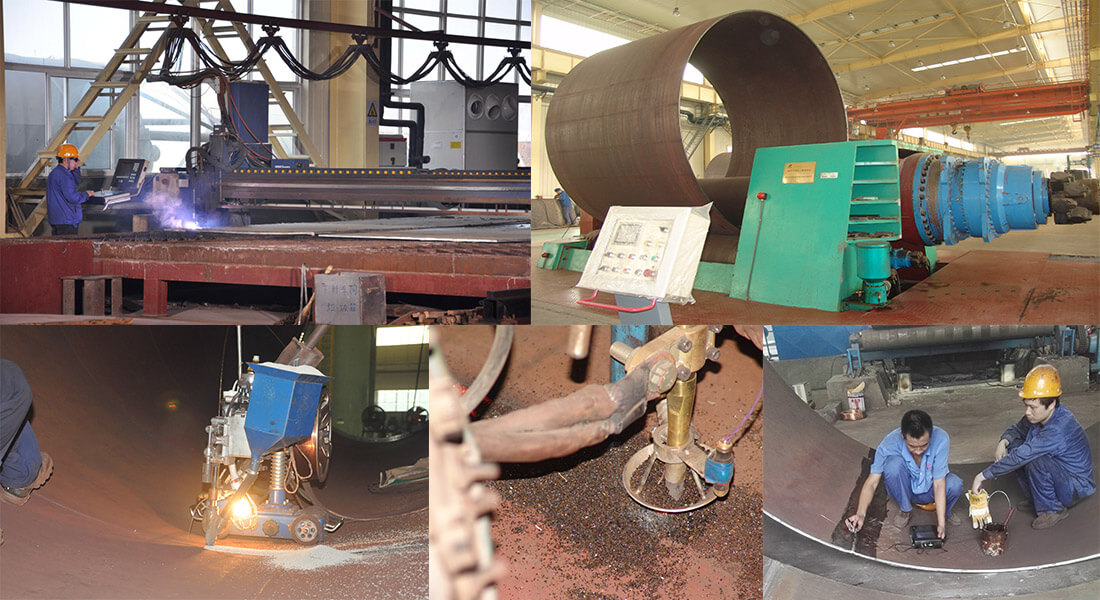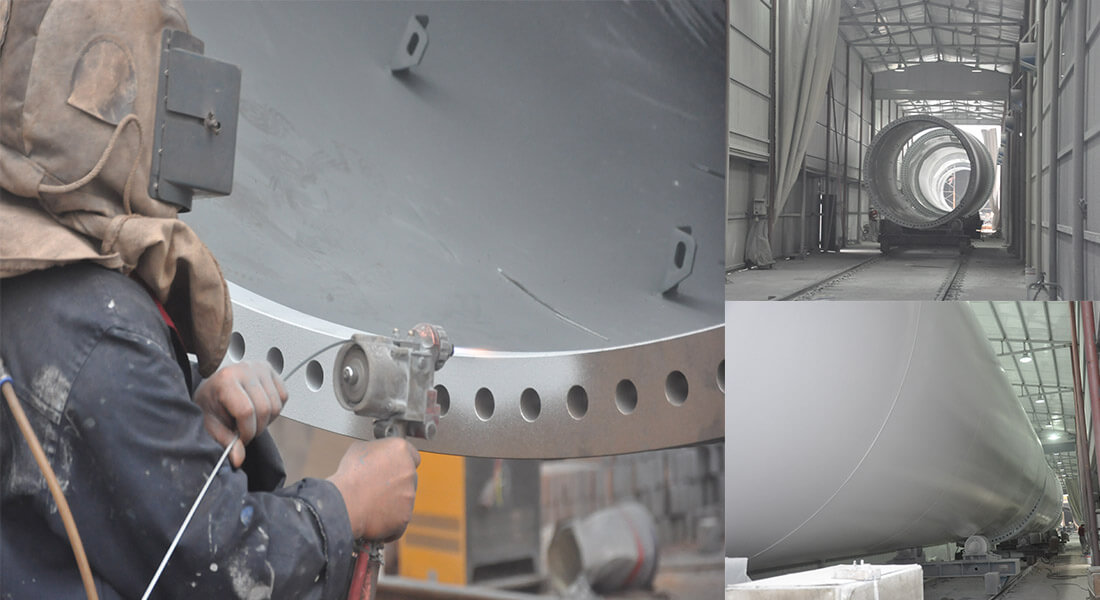
Anyang Machinery is specialized in manufacturing both onshore & off shore wind turbine tower and the foundation structure for electricity generation. A complete wind turbine tower manufacturing process can be divided into three parts, the manufacture of flange, the manufacture of segmental wind turbine tower, and wind turbine tower coating.
Wind Turbine Tower Flanges Manufacturing Process
Flanges are the connecting pieces of the wind turbine tower. It is on both the ends of each segmental wind turbine towers, which used to connect with the neighboring segmental wind turbine tower.
CNC Cutting
Cutting raw material for wind turbine tower flanges adopts an equally four segments layout. As only the upper side of the top tower section flanges need machining, the reserved thickness for upper tower section is 3mm, and others are 2mm. In consideration of the constringency of flange during welding, the diameter of flange is 3mm larger when cutting raw material for flange.
Flange Pairing
Build a flange pairing template based on the specification and production schedule. Make sure that the four section flanges can be grouped to a complete circle. Also, due to the constringency of flange during welding, the diameter of the grouped circle is also 3mm larger.
Flange Welding
During welding process, the larger double groove side of flange must be welded first, and then the small double groove side. Moreover, the flanges must be welded twice. In order to reduce the deformation of flanges, the two side of flanges will be welded alternately.
Nondestructive Test(NDT)
After welding, the flanges will go through 100% ultrasonic testing. After grinding, it will also go through 100% penetrant testing.
Distortion Rectification
We have a professional flange flatness testing template. After welding, the anti-deformation board is removed in order to go through the grinding process. After grinding, the flanges will be placed on the flatness testing template, the maximum clearance between flange and template is the flatness of flanges. The flanges with oversize flatness will be reprocessed in order to satisfied the technical requirements.
Drilling
Make the flange drilling template based on the requirement, and mark the directional well of 0〫, 90〫, 180〫 and 270〫. Place the flanges based on the directional well of the flange drill template. The flanges must be place straightly during drilling.
Inspection
Check out the dimension of each drill holes and the position precision (both of the positive and negative sides), and keep record.

Segmental Wind Turbine Tower Manufacturing Process
Wind turbine tower is the supporting piece of the wind power generation system. It is used to support the upper wind turbine and absorb the vibration of wind turbines. As the complete wind turbine tower is too high to transport, wind turbine tower manufacturers usually make several segmental wind towers, and install the complete wind tower on site.
CNC Cutting
We adopts numerical control cutting for the cutting raw material process. In consideration of the steel constringency during welding, the height of the cutting material for each single tower section should be 1mm longer.
After cutting, the steel material must be re-examined, the deviation of steel plate length must under 2mm, the deviation of steel plate width must under 1mm, the diagonal deviation must under 3mm.
Beveling
According to the experiences of actual wind turbine tower manufacture projects, the steel plate under 16mm can be unbeveled, and the steel plate with a thickness more than 16mm need be grooved on one side.
Bending & Longitudinal Joint Pairing of Single Tower Section
The bending of single tower section is processed by the plate bending machine. The longitudinal joint pairing will be processed right after plate bending. During the pairing, the gap width must be controlled under 1mm, the misalignment is no more than 0.5mm. During the pairing, we will use a grinder to polish the grooves, in order to clean the rust, oil stain and metallic oxide around the grooves.
Longitudinal Joint Welding of Single Tower Section
The unbeveled steel plate under the thickness of 16mm uses union melt welding technology directly to weld the longitudinal joint of single tower section. The steel plate with the thickness over 16mm uses union melt welding technology on the inner side groove to weld the single tower section longitudinal joint.
Roundness Checking
When we finished the longitudinal joint welding, we will use the re-bending machine to check the roundness of each single tower section. During the roundness check, use a inside caliper model with the span of 800mm to examine the tower roundness and longitudinal joint angularity. The clearance between the tower wall and the model is no more than 3mm.
Pair-setting of Single Tower Section And Flange
Before girth pairing single tower sections, we will welding the single tower sections with their paired flanges.
Before we pairing the single tower sections and flanges, the roundness of single towers must be adjusted. The error of flange flatness is no more than 2mm. Use the grinder to remove the rust and oil stains around the grooves of the single tower section.
The pair-setting of single tower section and flange operates strictly under the gapless vertical pairing method. In order to control the deformation of welded flanges, we connect the neighboring two tower sections with bolts before welding.
Single Tower Section And Flange Welding
We use two different welding methods to welding the single tower sections and flanges. For the wind turbine tower foundation and the under tower section of the under segmental wind tower, we use co2 arc welding method to weld the tower and flanges. For other single tower sections and flanges, we use co2 arc welding method to weld the insider part and union melt welding method to weld the outside part.
Upper Flange Machining
We use the milling machine to do the upper flange machining.
Girth Pairing of Segmental Wind Towers
Reversing each single tower sections of a segmental wind tower, and pairing them with zero clearance. The complete pairing process must be operated by the inner side of tower, and the error of girth pairing must under 0.5mm.
Girth Welding of Segmental Wind Towers
We use the union melt welding method to weld the neighboring single tower section girth for a segmental wind tower.
Nondestructive Test(NDT)
After welding, each segmental wind tower will go through 100% ultrasonic testing. After grinding, it will also go through 100% penetrant testing.

Wind Turbine Tower Coating
After the manufacturing process of segmental wind towers and flanges, there are some extra processes for the wind tower surface treatment.
Sand Blasting
Sand blasting is pneumatically driven, using the high speed jet stream to eject the sand materials on the surface of wind turbine towers, in order to clean the rust and oil stains on the wind tower surface. Before the blasting, we will also pre-treat the wind turbine tower surface in order to improve the adhesion of the coating.
Multilayer Anti Corrosive Coating
The anti corrosive coating can be divided into primer coating, intermediate coating and finish coating. For the primer coating, we use epoxy anticorrosive paint, as it has outstanding adhesion and anticorrosive performance. For the intermediate coating, we use the high build epoxy anticorrosive paint with mica iron oxide components, which sealed the primer paint. For the finish coating, we use acrylic and polyurethane anti corrosive paint, as it has the advantages such as UV-resistance, non-discoloring, and better weathering resistance performance.
